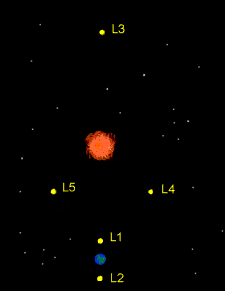
Original Windows graphic, by Sarah Joseph
Lagrange Points
We could learn a lot about the solar wind if we could put satellite in one place in space. Changes in the solar wind could be measured easily. If the satellite is between Earth and the Sun, it could be an early warning system. It would let us know about any changes in the solar wind before they reached the Earth.The problem with putting a satellite in one place is that it is impossible. To resist gravity, a satellite has to be moving. Nearly as helpful would be if the satellite could orbit the Sun in a one-year orbit, to match the Earth.
There are five places where this can happen. They are called Lagrangian points. These points are places where a satellite would have the same orbit time as the Earth. L1 is just inside Earth's orbit, the best place for an early warning system.
The ACE and SOHO spacecraft are both at L1. This point is about 1.5 million km from the Earth.
What's New on the Site?
When Nature Strikes - Earthquakes
When Nature Strikes - Volcanoes
When Nature Strikes: Tsunami Classroom Activity
When Nature Strikes: Wildfires - Why are they a challenge to stop?
Windows to the Universe Community | |
News | Opportunities |
You might also be interested in:
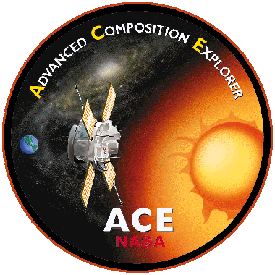
ACE Mission Page
Have you ever wondered what you are made of? Where did the elements come from that make up your body? The elements that make up your body are the same elements found on the Earth. Where did those Earth...more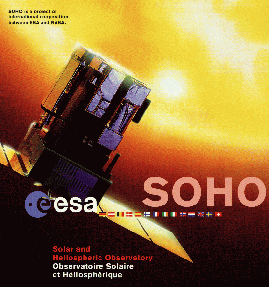
SOHO Mission Page
Do you know why your radio doesn't come in? Solar activity and solar wind, sometimes cause problems for us! Scientists are trying to figure out solar events. The SOHO mission is one way we are working...more
How do Satellites & Spacecraft Monitor Space Weather?
Satellites in space help us measure space weather. They collect info about the Sun, Earth's magnetosphere, Earth's atmosphere, and space weather. Spacecraft that Watch the Sun Some spacecraft watch the...more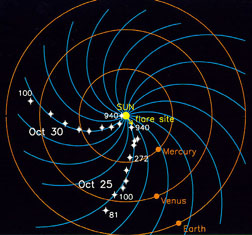
IMF
The Sun acts like it has a big magnet in the middle of it. We call this the Sun's magnetic field. The Sun's magnetic field has a fancier name, the Interplanetary Magnetic Field (IMF). This just means that...more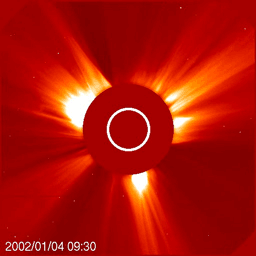
Coronal Mass Ejections
Have you ever seen an explosion before? Maybe you've seen a volcano explode on t.v. Or maybe you've seen a potato explode in the microwave because your mom forgot to poke holes in it. Well, explosions...more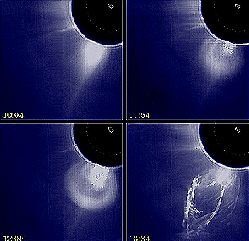
Solar Activity
The Sun is not a quiet place, but one that exhibits sudden releases of energy. One of the most frequently observed events are solar flares: sudden, localized, transient increases in brightness that occur...more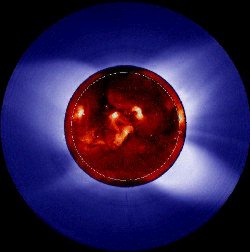
The Solar Atmosphere
The visible solar atmosphere consists of three regions: the photosphere, the chromosphere, and the solar corona. Most of the visible (white) light comes from the photosphere, this is the part of the Sun...more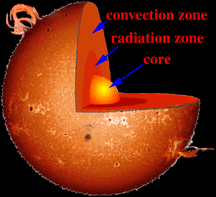
The Solar Interior
To understand how our Sun works, it helps to imagine that the inside of the Sun is made up of different layers, one inside the other. The center of the Sun is called the core. It is the region where the...morePlease log in
Science Blogs
Real Climate: climate science from climate scientists

Windows to the Universe, a project of the National Earth Science Teachers Association, is sponsored in part is sponsored in part through grants from federal agencies (NASA and NOAA), and partnerships with affiliated organizations, including the American Geophysical Union, the Howard Hughes Medical Institute, the Earth System Information Partnership, the American Meteorological Society, the National Center for Science Education, and TERC. The American Geophysical Union and the American Geosciences Institute are Windows to the Universe Founding Partners. NESTA welcomes new Institutional Affiliates in support of our ongoing programs, as well as collaborations on new projects. Contact NESTA for more information.





